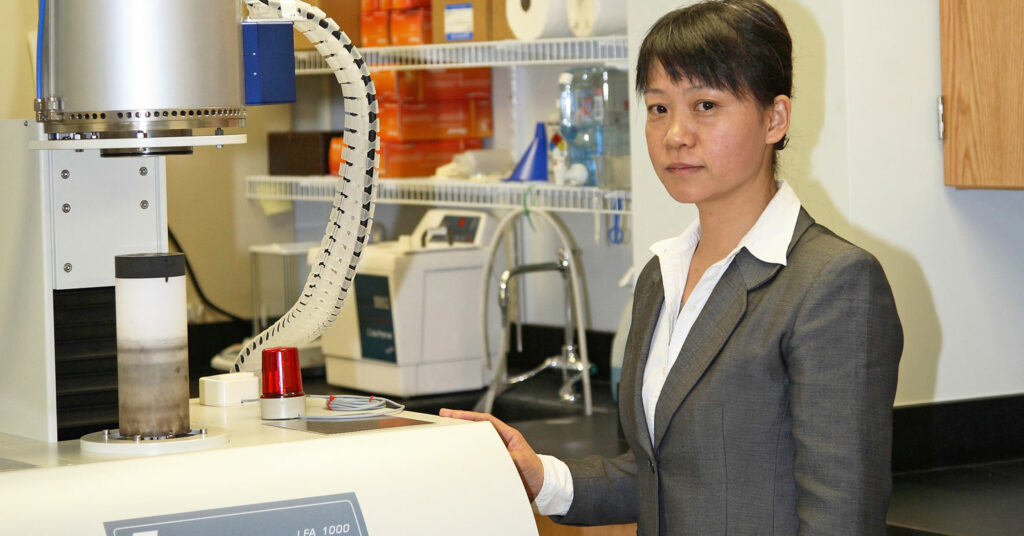A recent $1.25 million award to West Virginia University will aid a project aimed at producing a higher amount of hydrogen gas – a clean fuel – with less electric power consumption.
Produced clean hydrogen can benefit every sector of society ranging from household electrical power to electric vehicles to land-scale industry applications, said Xueyan Song, lead project investigator and professor of mechanical and aerospace engineering.
The U.S. Department of Energy-funded project supports its Hydrogen Energy Earthshot initiative, which is intended to cut costs and accelerate breakthroughs in the clean hydrogen sector.
Specifically, Song will use a solid oxide electrolyzer, an electrochemical device that converts electrical energy into chemical energy. When the solid oxide electrolyzer is supplied with electric power and steam/water, it produces clean hydrogen gas, Song explained.
“We are focusing on the nanotechnology that will enable the solid oxide electrolysis cells to be able to produce a higher amount of hydrogen gas with less consumption of electric power,” Song said.
A solid oxide electrolysis cell, composed of ceramics, has two porous sponge-like electrodes sandwiching a dense solid electrolyte. Electrochemical reactions and hydrogen production take place in the internal surface of the porous electrodes. Song’s team will study the internal surface of the sponge-like delicate ceramics.
“We design the nano-scale coating layer that could be applied on the internal surface of the porous electrode from the as-made state-of-the-art cells (the cells aren’t developed from lab scale) and significantly increase their catalytic activity and durability,” Song said. “While it seems to be a straightforward technology for confronting the challenges faced by the entire fuel cell community, it is a very stringent and extremely delicate nano-scale materials design that is built from our decades-long extensive experience and deep understanding of the nano and atomic structure of ceramics.”
The ultimate goal is to see increased clean hydrogen production, a viable solution for the ongoing climate crisis, Song added.
Hydrogen —when combined with oxygen in a fuel cell—produces electricity with water and heat as by-products. It can be produced from resources such as natural gas, nuclear power, biomass and renewable power like solar and wind. According to the DOE, these qualities make it an attractive fuel option and input for transportation, electricity generation and industrial applications, such as in trucks, buildings and manufacturing.
“To make hydrogen production using SOEC technology more affordable and accessible for different applications, the cells that are the central piece of this technology for doing all the electrochemical energy conversion are expected to possess a higher hydrogen production rate, less consumption of the electricity and ultimately longer device lifetime,” Song said. “Those are the challenges faced by the entire fuel cell community worldwide.”
The produced hydrogen can also be stored and the SOECs can be integrated into intermittent renewable energy systems such as those from solar and wind, she said.
Song, a materials scientist and faculty member of the Benjamin M. Statler College of Engineering and Mineral Resources since 2008, has researched the clean energy and hydrogen economy for several years.
“I sincerely appreciate the opportunity to continuously contribute to the overall research in clean energy in the state of West Virginia, which is at the forefront of our nation’s carbon management and hydrogen research,” she said.
From WVU Today
